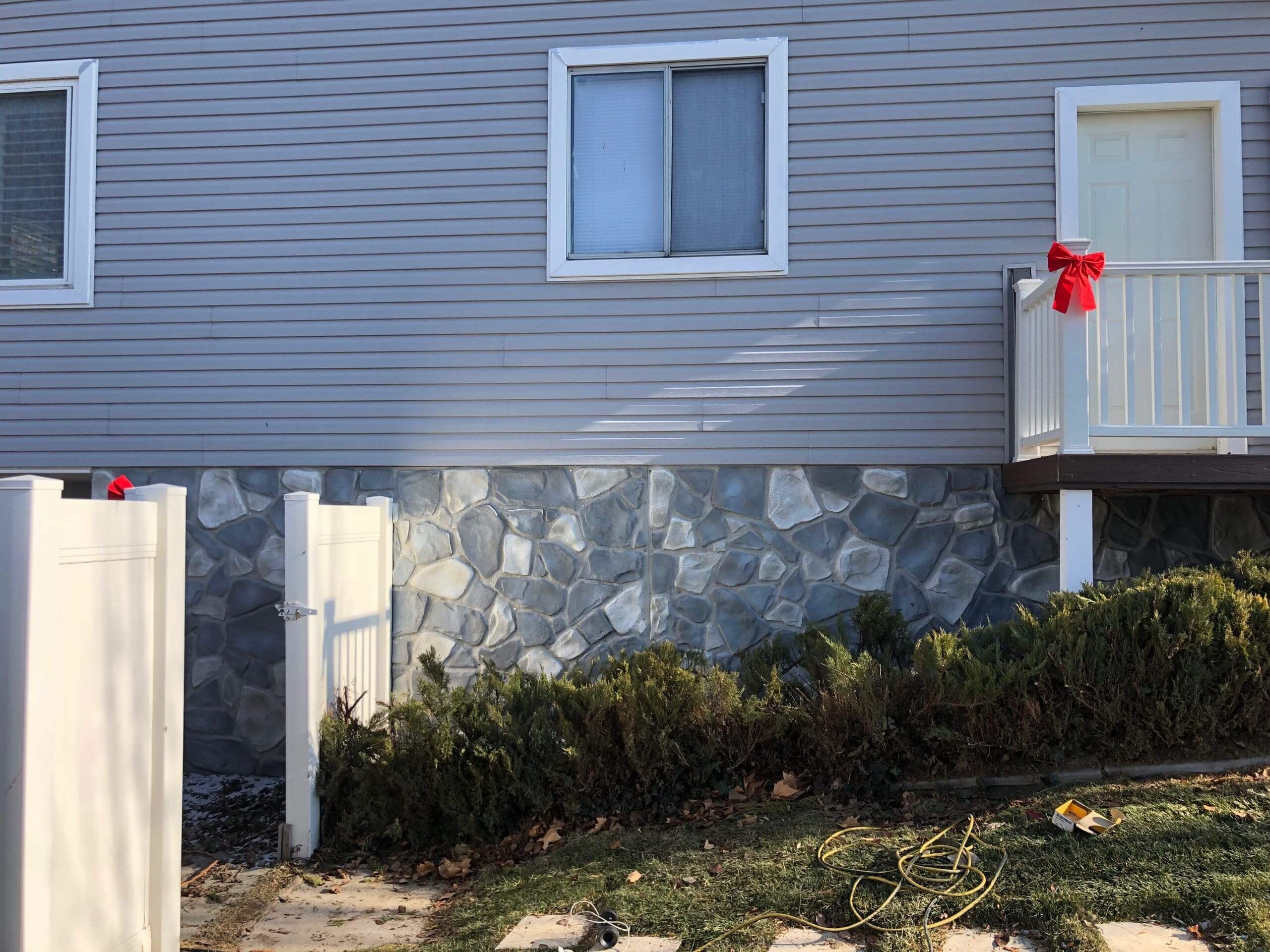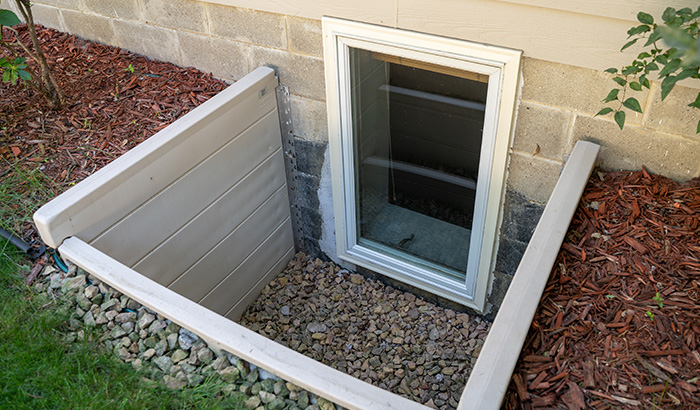Are foundation liners worth it? This is a common question for Utah homeowners to ask before making an investment.
Foundation liners are designed to protect your home from moisture, reduce thermal expansion and contraction, prevent soil erosion, improve indoor air quality, and enhance energy efficiency. And if properly cared for, your foundation liners can protect your home without growing mold or accumulating radon.
In this blog, we will explore the benefits and drawbacks of foundation liners, the different types of liners available, the installation process, and the factors to consider when choosing the right foundation liner for your home.
By the end of this blog, you will better understand whether foundation liners are worth it for your Utah home.
Understanding the Utah Climate
Utah has a semi-arid climate with low humidity, which may make a vapor barrier less effective than a drainage mat for preventing moisture buildup in the foundation. Additionally, the soil types in Utah can vary greatly, and different liners may be more effective in certain soil types than others.
Understanding the Utah climate can help homeowners choose the most effective foundation liner for their home and ensure that it provides adequate protection against the area’s unique climate and soil conditions.
Here are a few different factors of the Utah climate to think about.
Temperature Changes
Utah experiences extreme temperature changes throughout the year, with hot summers and cold winters. These temperature fluctuations can cause the soil around your foundation to expand and contract, leading to foundation damage over time. When the soil expands, it exerts pressure on your foundation, causing it to shift and crack.
Conversely, when the soil contracts, it can cause your foundation to settle, leading to cracks and other damage. Foundation liners can help mitigate the impact of temperature changes on your foundation by providing insulation and preventing thermal expansion and contraction.
Precipitation
Utah is a relatively dry state, with an average annual precipitation of around 12 inches. However, during the winter months, Utah can experience heavy snowfall, which can cause moisture to accumulate around your foundation. Moisture can penetrate the soil and cause it to expand, leading to foundation damage.
Additionally, moisture can cause wood to rot and attract pests, both of which can damage your foundation. Foundation liners can protect your foundation from moisture by acting as a barrier and preventing water from penetrating the soil.

Soil Types
Utah has a wide variety of soil types, from sandy to clay. Some soil types are more stable than others, and certain soil types are more prone to expansion and contraction.
For example, clay soils are particularly susceptible to moisture and can expand significantly when exposed to water. This can put pressure on your foundation and lead to cracks and other damage.
Sandy soils, on the other hand, are more stable and less likely to expand or contract. Understanding the soil type around your foundation is important when considering foundation liners, as different liners are better suited to different soil types. For example, drainage mats are particularly effective in clay soils, while insulating liners are better suited to sandy soils.
Benefits of Foundation Liners
Foundation liners provide several benefits for homeowners in Utah, including:
- Protection against moisture
Foundation liners act as a barrier and prevent water from penetrating the soil, reducing the risk of moisture-related damage to your foundation. This can help extend your foundation’s lifespan and prevent costly foundation repairs.
- Reduction of thermal expansion and contraction
Foundation liners can help to reduce thermal expansion and contraction by providing insulation. Insulating liners create a barrier between the soil and the foundation, reducing heat transfer and cold. This can help stabilize the soil and prevent damage to your foundation.
- Prevention of soil erosion
Soil erosion occurs when water or wind washes away the top layer of soil around your foundation. This can cause the foundation to settle and become unstable. Drainage mats are a foundation liner that can help prevent soil erosion. They allow water to drain away from the foundation, reducing erosion risk and stabilizing the soil.
- Improving indoor air quality
Vapor barriers are a type of foundation liner that prevent moisture from entering your home. This can help reduce the risk of mold and mildew growth, leading to respiratory problems and other health issues. Additionally, by preventing moisture from entering your home, vapor barriers can help to maintain a comfortable and healthy indoor environment.
- Enhancing energy efficiency
Insulating liners can help reduce heat loss during the winter months and heat gain during the summer months. This can help to reduce your energy bills and make your home more comfortable year-round. Additionally, by reducing the workload on your HVAC system, foundation liners can help to extend the lifespan of your heating and cooling equipment.
Types of Foundation Liners
Several different types of foundation liners are available, each with its own set of benefits. We’ll cover some of the most common types of foundation liners.
Vapor Barriers
Vapor barriers prevent moisture from entering your home. They are typically made of polyethylene or other synthetic materials and are installed on the exterior of the foundation. Vapor barriers act as a barrier between the soil and your home, preventing moisture from penetrating the foundation walls and entering your living space. This can improve indoor air quality and prevent moisture-related damage to your home.
Insulating Liners
Insulating liners are designed to reduce heat transfer between the soil and your foundation. They are typically made of foam board or other insulating materials and are installed on the exterior of the foundation.
Insulating liners create a barrier between the soil and the foundation, reducing the transfer of heat and cold. This can help to stabilize soil and prevent damage to your foundation. Plus, insulating liners can enhance your home’s energy efficiency by reducing heat transfer.
Drainage Mats
Drainage mats help prevent soil erosion and promote drainage. They are typically made of plastic or rubber and are installed on the exterior of the foundation. Drainage mats allow water to drain away from the foundation, reducing erosion risk and stabilizing the soil.
Also, drainage mats can help prevent water from accumulating around the foundation, reducing the risk of moisture-related damage.
Composite Liners
Composite liners are a combination of two or more types of foundation liners. For example, a composite liner may include insulating and drainage layers. Composite liners offer the benefits of multiple types of liners in one package, making them a versatile and effective solution for foundation protection.
The specific composition of a composite liner can be customized to suit the unique needs of your home and the soil around your foundation.
Installation Process
The installation process for foundation liners can vary depending on the liner type and your home’s specific needs. However, there are some general steps that are typically involved in the installation process, including:
- Pre-installation Preparation
Before installation, the area around your foundation will need to be prepared. This may involve excavating soil around the foundation, cleaning the foundation walls, and ensuring the surface is dry and debris-free. Any necessary foundation repairs should also be completed before installation.
- Liner Application
Once the area is prepared, the foundation liner can be applied. The specific application method will depend on the type of liner being used. Vapor barriers are typically attached to the foundation using adhesive or mechanical fasteners. Insulating liners and drainage mats are often secured to the foundation using mechanical fasteners. Composite liners may require a combination of adhesive and mechanical fasteners.
- Finishing Touches
After the liner is installed, any necessary finishing touches should be completed. This may involve sealing the edges of the liner to ensure a tight fit and prevent moisture from entering. Any exterior drainage systems should also be installed or updated as necessary to ensure proper water flow away from the foundation.
- Post-installation Maintenance
Once the installation is complete, it is important to maintain the foundation liner to ensure it provides adequate protection. This may involve regular inspections to ensure the liner is still securely in place and free of damage.
It is also important to ensure proper drainage around the foundation to prevent water from accumulating and causing damage. Regular cleaning and maintenance of exterior drainage systems can ensure proper water flow and prevent clogs.
Risks and Disadvantages of Foundation Liners
While foundation liners offer many benefits, there are also some potential risks and disadvantages to be aware of.
Incompatibility with Certain Soil Types
Some types of foundation liners may not be suitable for certain soil types. For example, a drainage mat may not be effective in clay soils, which tend to become waterlogged and retain moisture. It is important to consult a professional to determine which foundation liner best suits the soil type around your home.
The Potential for Liner Damage and Degradation
Over time, foundation liners may become damaged or degraded, reducing their effectiveness. Damage can occur due to various environmental factors and physical damage.
Regular inspections and maintenance can help identify any damage and ensure that any necessary repairs or replacements are completed promptly.
Choosing the Right Foundation Liner for Your Home
When it comes to choosing the right foundation liner for your home, there are several factors to consider. Some of these include:
- Climate and soil type – The climate and soil type around your home can influence the effectiveness of different types of foundation liners. For example, a vapor barrier may be more effective in areas with high humidity, while a drainage mat may be more effective in areas with heavy rainfall or clay soils.
- Existing damage to the foundation – If your foundation has existing damage, such as cracks or leaks, it may require a different type of liner.
- Budget – Different types of foundation liners vary in cost.
- Desired benefits – Different types of foundation liners offer different benefits, so it is important to consider which benefits are most important to you. For example, an insulating liner may be the best choice if energy efficiency is a priority.
Choosing the right foundation liner for your home can be a complex process; it is important to seek professional guidance. A foundation specialist can assess your home’s unique needs and recommend the best type of liner for your specific situation.
They can also ensure that the liner is installed correctly and provide guidance on post-installation maintenance to ensure that the liner continues to provide adequate protection. Working with a professional ensures that your investment in a foundation liner is well-spent and maximizes your home’s benefit.
Foundation Liners and More From Windowell Expressions
So, what do you think? Are foundation liners worth it? The decision to invest in a foundation liner ultimately depends on each homeowner’s specific needs and circumstances.
If you decide to invest in a foundation liner, contact the professionals at Windowell Expressions. Our team of experts can help you pick the best foundation liner for your home and ensure a quality installation process.
With the right foundation liner and professional guidance, you can protect your home against Utah’s unique climate and soil conditions. Call us today at 801-683-0838 for a free quote!







